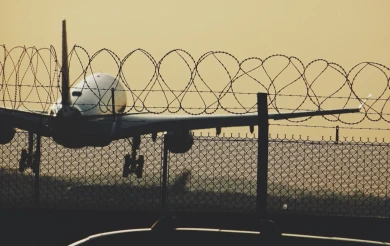
27 Dec 2021
Growing E-commerce in the Country
Logistics using land transportation services are still the mainstay of the transportation services industry. Road transport accounts for 70-80% of the total freight volume that is handled annually within Indonesia’s borders. In value/currency terms, the share of the road freight market has stayed between 40-50% of the total logistics market size.
The shipping industry holds a major role in Indonesia’s trade since 90% of Indonesia’s export commodities are delivered via water transportation. Shipping lines face operational issues, such as port inefficiencies, causing increased waiting and turnaround time, and risks of labor disputes.
Read MoreThe shipping industry holds a major role in Indonesia’s trade since 90% of Indonesia’s export commodities are delivered via water transportation. Shipping lines face operational issues, such as port inefficiencies, causing increased waiting and turnaround time, and risks of labor disputes.

27 Dec 2021
Market Overview
Post COVID-19, as the industry positions itself for recovery and growth, technology will increasingly play a major role to enable all stakeholders, including shippers, transporters, warehouse owners, and vendors, to become more efficient in responding to changing market realities. Although logistics is the heart of domestic and international trade, uncertainty remains a huge problem in Indonesia’s supply chain, exacerbated by the country’s unique archipelagic makeup of 17,000 islands, which means goods cannot be transported using trucks on land alone. A multimodal system, using land and sea transportation as well as warehouses, is needed to reach remote areas of each island.
Read More
27 Dec 2021
Competitive Landscape
Increasing Trucks to Support the Increasing Demand for Road Freight Transport
The population of freight trucks is expected to grow over the forecast period driven by the support of the improvement of toll road infrastructure and the expansion of factories of large companies.
The performance of these business services will be even greater if inter-modal synergies, namely cooperation between trucking service companies and ship and railroad transportation companies, also occur because the process of shipping goods will reach a wider area between regions and islands.
However, government policy support is needed to facilitate truck transport mobility, so that the intensity and volume of trips also increase.
Read MoreThe population of freight trucks is expected to grow over the forecast period driven by the support of the improvement of toll road infrastructure and the expansion of factories of large companies.
The performance of these business services will be even greater if inter-modal synergies, namely cooperation between trucking service companies and ship and railroad transportation companies, also occur because the process of shipping goods will reach a wider area between regions and islands.
However, government policy support is needed to facilitate truck transport mobility, so that the intensity and volume of trips also increase.

